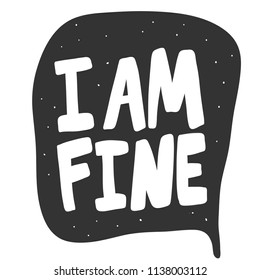Syntactic Functions and Colloquial English – 7º ano – 6ª quinzena – 3º ciclo – AULA e IMPRESSÃO - 19/11/2020



Syntactic Functions:
Os verbos intransitivos (intransitive verbs) se diferenciam dos verbos transitivos (transitive verbs) pois não necessitam de um objeto como complemento. Por possuírem um significado completo, não são acompanhados por objetos diretos ou indiretos, uma vez que a ação termina no próprio sujeito.
Exemplos:
- The dog ran.
- She sang.
- I jumped.
Como pode-se observar, os verbos intransitivos conseguem carregar, junto ao sujeito, toda a carga semântica que a frase necessita. Se necessário, pode-se adicionar advérbios, mas o verbo intransitivo sempre se garante sozinho.
Disponível em https://www.infoescola.com/ingles/verbos-intransitivos-intransitive-verbs/#:~:text=Os%20verbos%20intransitivos%20(intransitive%20verbs,The%20dog%20ran. Acesso em 25 de set. de 2020.
O verbo transitivo (transitive verbs) possui características específicas que o faz diferente do verbo intransitivo. O verbo transitivo geralmente expressa a ideia de ação concreta e necessita de um objeto direto para conseguir comunicar seu real significado, seja esse objeto algo ou alguém que receba tal ação do verbo.
Exemplos:
- Mary cleaned the house all by herself.
- Luke wants a new car for his family.
- I ate all the cake last night.
Disponível em https://www.infoescola.com/ingles/verbos-transitivos-transitive-verbs/ Acesso em 25 de set. de 2020
Colloquial English:
É uma variedade linguística usada em situações cotidianas mais informais. O inglês coloquial se encontra mais presente na oralidade (fala) e não se adequa às normas da gramática tradicional (norma culta/padrão da língua inglesa).
É na linguagem coloquial que encontramos as gírias, estrangeirismos, neologismos, abreviações, isto é, palavras e expressões que não se relacionam à norma culta da língua inglesa.

Now, let’s read some texts and do some exercises!
Portuguese Colonisation of Brazil

Although long inhabited by prehistoric tribes and settlements, Brazil underwent an entirely new kind of habitation during the 16th century. In April 1500, the Portuguese arrived on the Bahian shores of Rio Buranhém, under the direction of Pedro Alvares Cabral. These ones documented seeing indigenous inhabitants upon landing on the beach, who greeted them with peace offerings of headdresses made from parrot feathers.
Although the Portuguese sailors stayed for only nine days, the indigenous people soon became fascinated by the iron tools used, the Catholic mass service observance and the alcoholic beverages that they observed. Because of this perceived interest in the Roman Catholic religion, the Portuguese assumed that these ones would quickly convert to Christianity once educated.
Disponível em: https://www.brazil.org.za/portuguese-colonisation-of-brazil.html Acesso em 25 de set. de 2020.
1- Answer these questions in English.
a) When did the Portuguese arrive on the Bahian shores of Rio Buranhém?
b) Did the Portuguese sailors stay in Brazil for only eleven days?
c) Who greeted the Portuguese with peace?
d) What did the indigenous people become fascinated?
2- Choose the correct answer to complete the sentences.
2.1. The headdresses were made from __________.
a) ( ) parrot feathers.
b) ( ) chicken feathers.
c) ( ) ox leather.
d) ( ) chicken legs.
2.2. The Portuguese people were _______________.
a) ( ) Evangelical.
b) ( ) Spiritual.
c) ( ) Catholic.
d) ( ) Islam.
3- Classify the highlighted verbs into Intransitive (VI) or Transitive (VT).
a) ( ) the Portuguese ARRIVED.
b) ( ) who GREETED them…
c) ( ) people soon BECAME fascinated by the iron tools used.

4- Ao analisarmos o texto e seus elementos constitutivos, podemos classificá-lo como
a) ( ) carta ao leitor, pois a imagem mostra ao destinatário o local onde se encontra o remetente.
b) ( ) cartum, pois tem como característica a crítica, de maneira breve, dos momentos que abrangem o dia a dia de uma sociedade.
c) ( ) tirinha, visto que apresenta um personagem principal e retrata uma situação da atualidade com humor e refere-se ao estabelecimento.
d) ( ) anúncio publicitário, visto que busca persuadir o leitor a comprar produtos desse estabelecimento.
5- All the sentences in the cartoons are in colloquial English. Rewrite them in formal English.



You can print this lesson.

